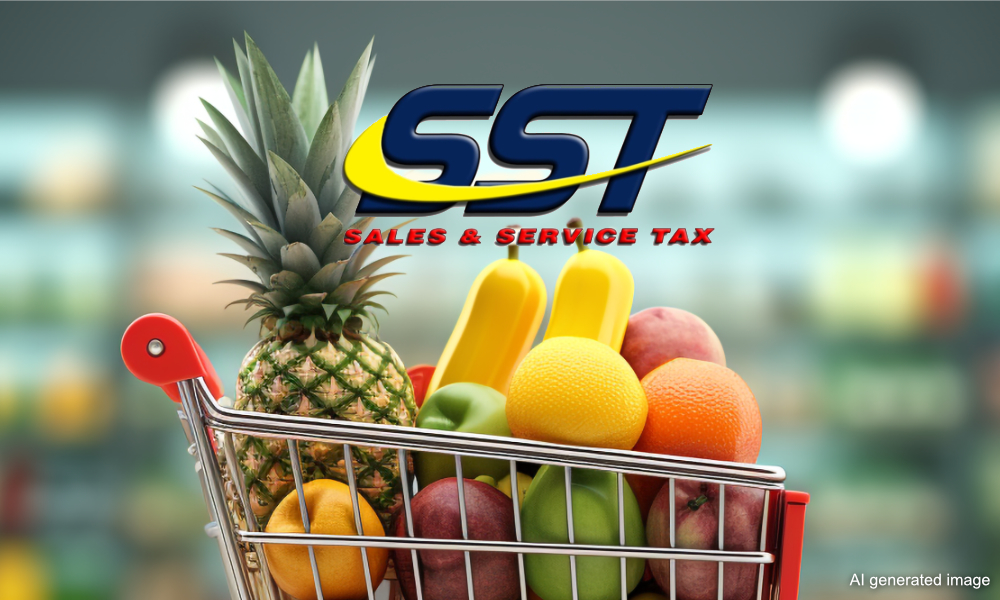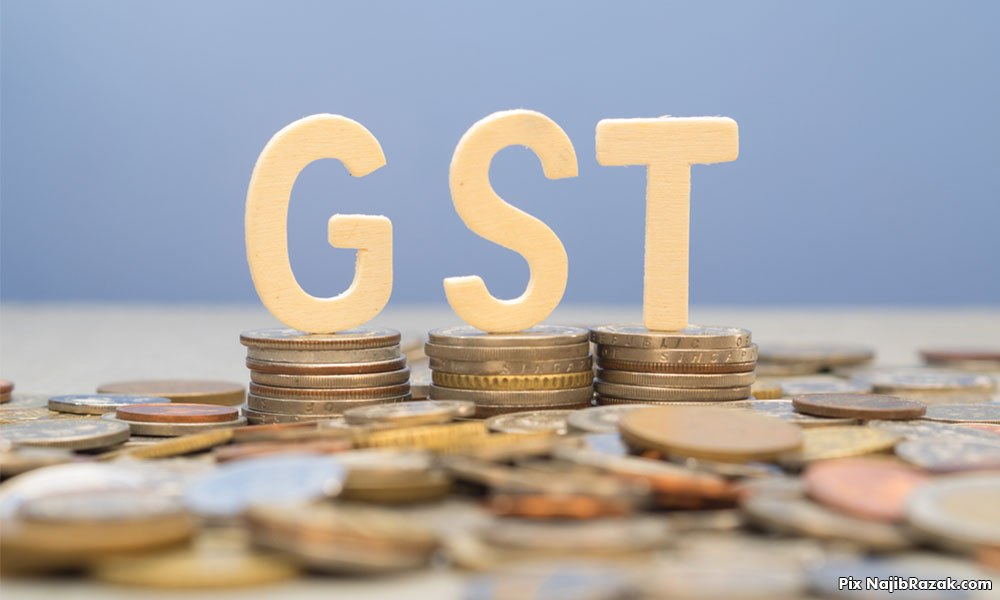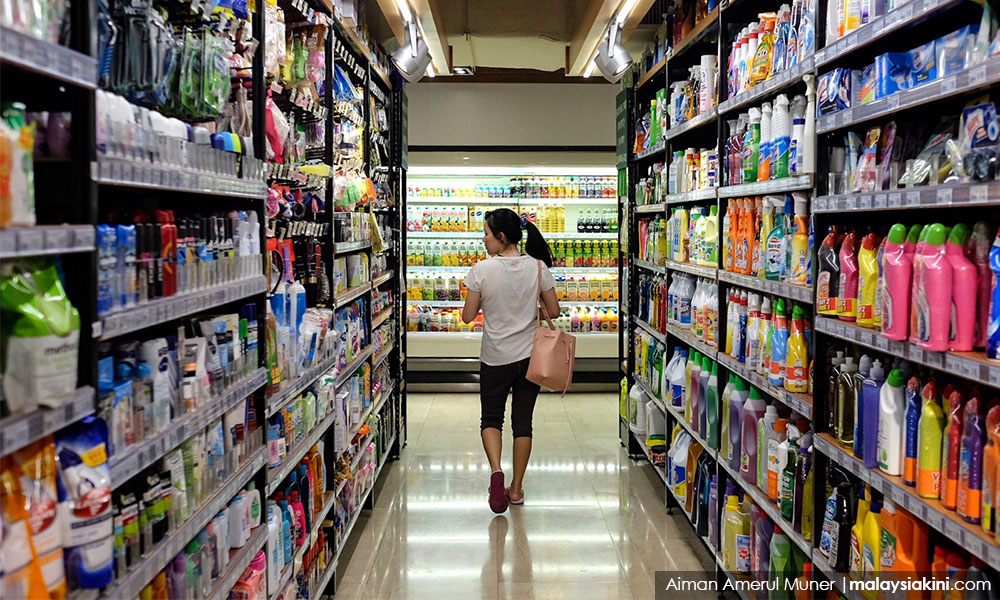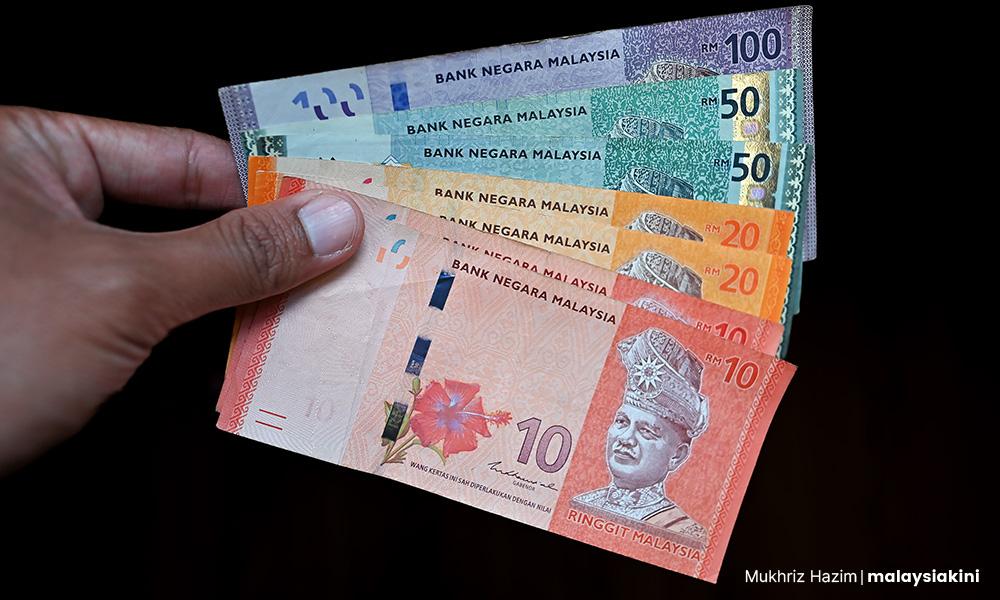
Malaysiakini Team
Published: Jun 21, 2025 10:08 AM
Updated: 12:55 PM
KINIGUIDE | There is an ongoing national conversation in Malaysia about consumption taxes, balancing the legacy of the goods and services tax (GST) with the phased return and expansion of the sales and services tax (SST).
Let’s scrutinise both tax systems.
What is GST?
Enacted under the Goods and Services Tax Act 2014, Malaysia implemented GST ( six percent) from April 1, 2015, levied at each supply-chain stage.
Basic goods like fresh food, water, and electricity remained zero-rated, while some services - education and healthcare, for example, were GST-exempt.
Businesses could claim input tax refunds, avoiding tax-on-tax. A year before it was repealed in June 2018, revenue from GST peaked at RM44 billion.
What is SST, and what’s new?
The SST was introduced through the Sales Tax Act 1972 and the Service Tax Act 1975. The laws were in force until replaced by GST on April 1, 2015.
When the Pakatan Harapan government came to power in 2018, it abolished the GST and reinstated SST on Sept 1, 2018.
SST comprises a single-stage sales tax and a separate service tax (six percent), now levied on broader categories under Budget 2025, including luxury food items and commercial services.

However, from July 1, 2025, SST rates will be increased to eight percent for some sectors, and extended to items like salmon, avocado, apples, and beauty services.
The government expects the expanded SST to increase revenue by RM5 billion this year, and by RM10 billion in 2026.
What’s happening on July 1?
Putrajaya will implement revised sales tax rates and expand the scope of the service tax starting July 1, in a move aimed at strengthening Malaysia’s fiscal position through higher revenue and a broader tax base.
Finance Minister II Amir Hamzah Azizan announced that a zero percent sales tax on necessities will be maintained, while non-essential goods will see a tax of between five and 10 percent.

Finance Minister II Amir Hamzah Azizan
The full list of the expanded service tax and exemptions is here.
How the taxation works?
The example below assumes a simple supply chain involving a manufacturer or importer that produces or imports a product for RM100 and then sells it for a RM10 profit margin.
Each business further down the supply chain - namely the distributor and the retailer – also seeks an RM10 margin to cover their own expenses, and hopefully, turn a profit before the product finally ends up with the consumer.
If there is no consumption tax involved, then the consumer will end up buying the product for RM130 (RM100 initial cost, RM30 profit margin).
Under GST, however, the manufacturer collects a six percent GST (RM6.60) from the distributor on the government’s behalf.
The distributor does the same when it sells the product to a retailer. However, the distributor can also claim tax credits for the RM6.60 GST through the manufacturer.
The full list of the expanded service tax and exemptions is here.
How the taxation works?
The example below assumes a simple supply chain involving a manufacturer or importer that produces or imports a product for RM100 and then sells it for a RM10 profit margin.
Each business further down the supply chain - namely the distributor and the retailer – also seeks an RM10 margin to cover their own expenses, and hopefully, turn a profit before the product finally ends up with the consumer.
If there is no consumption tax involved, then the consumer will end up buying the product for RM130 (RM100 initial cost, RM30 profit margin).
Under GST, however, the manufacturer collects a six percent GST (RM6.60) from the distributor on the government’s behalf.
The distributor does the same when it sells the product to a retailer. However, the distributor can also claim tax credits for the RM6.60 GST through the manufacturer.

In a perfect world, this would be reflected in the price such that the increased cost associated with the tax is not further passed down the supply chain.
The same applies to the retailer, which claims RM7.20 in tax credit for the GST paid through the distributor, and then charges six percent GST to the consumer.
The final price comes to RM137.80. Throughout the process, the government collects RM21.60, but refunds RM13.80 in tax credits - leaving RM7.80 (six percent of the retail price) for the Federal Consolidated Fund.
When it comes to SST, however, the tax is only levied when the product is sold from the manufacturer or importer to the distributor at a rate that varies, depending on the type of product involved.
That is the only tax involved and there is no provision for tax refunds.
For the GST, we must note that the total collected is exactly six percent of the retail price, which is also the standard rate levied.

But this is not the case with the SST. In the examples above, the tax collected is 4.23 percent or 8.46 percent of the retail price, respectively, rather than the five or 10 percent that the government collects.
This figure will vary depending on the margins collected by each player in the supply chain. Hence, it is difficult for consumers to know how much is being paid to the government.
Why the difference matters?
The GST was often touted as being more efficient and transparent than SST, and the key to understanding the latter is appreciating the amount of paperwork involved for businesses to collect GST for the government and claim tax credits for themselves.
In a nutshell, GST creates a paper trail that cuts through the entire supply chain, making it more difficult for businesses to evade paying taxes compared to the SST.
It is also acknowledged to be more transparent. This is true in the sense that consumers/ taxpayers know exactly how much they are paying to the government in the form of GST.

Under SST, consumers are likely to still see “service tax” on the receipts for the services they pay for, but not “sales tax” on the receipts of the goods they purchase.
However, the GST scheme was not without its shortcomings. For one, keeping track of all that paperwork adds to the cost of doing business, which is ultimately passed down to the consumer.
There have also been persistent complaints about delays in GST refunds, which drives up prices.
Why some prefer GST over SST
Revenue and deficit control: GST generates higher revenue and a broader tax base, crucial for funding public services and reducing deficits.
Fairness and transparency: GST is transparent and progressive - with exhaustive coverage and better visibility - while SST hides tax in prices and lacks equity safeguards.
Economic readiness and public acceptance: While GST is more efficient, SST is simpler and less politically sensitive but raises questions about its sufficiency and impact on businesses and consumers.
Policy path ahead: Authorities have kept GST off the table until wage levels and economic health improve. Yet calls from businesses and international bodies suggest a structured, transparent shift back to GST may be prudent.
What’s the latest
Prime Minister Anwar Ibrahim has reaffirmed his stance against reintroducing GST - arguing it would burden consumers and emphasised SST’s targeted tax on luxury imports.

Prime Minister Anwar Ibrahim
Anwar said the government believes that GST should only be reinstated when the people’s average income levels increase to a more reasonable level of at least RM4,000 a month.
Anwar said the government believes that GST should only be reinstated when the people’s average income levels increase to a more reasonable level of at least RM4,000 a month.
***
kt comments:
Pakatan lied and kerbau-ed against GST until it painted itself into a corner - lying deceitful S-Wholes.


No comments:
Post a Comment